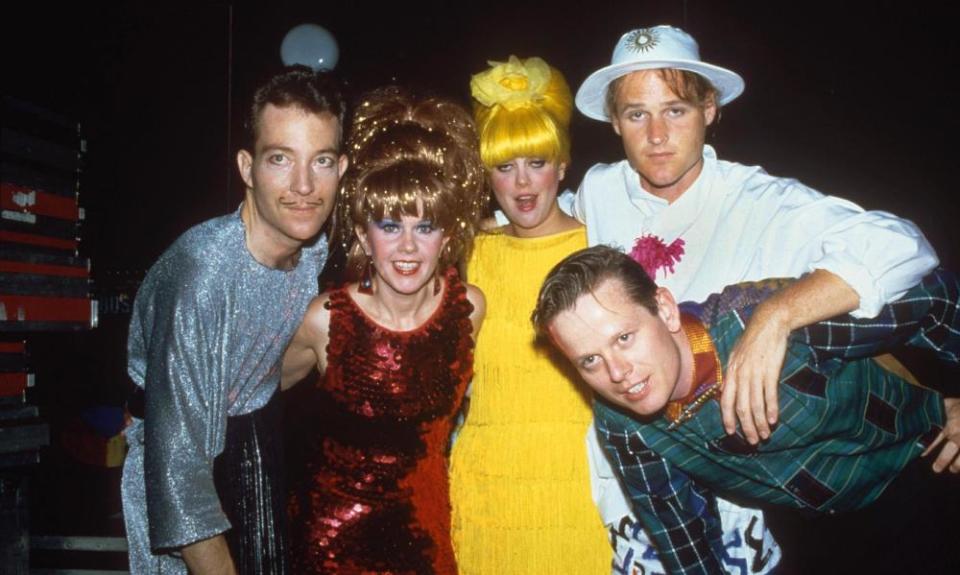Long Players, edited by Tom Gatti review – a new spin on an old favourite

It must be about 20 years since I read my first article about “the death of the album”. Technology gave birth to it in 1948 with the launch of the 12-inch vinyl disc and technology was expected to kill it by unbundling the parts from the whole: Napster begat iTunes begat Spotify. Yet while sales nosedived, artists doubled down. Albums such as Kendrick Lamar’s To Pimp a Butterfly or Vampire Weekend’s Modern Vampires of the City are every bit as substantial and satisfying as a 1970s opus, while the likes of Beyoncé and Taylor Swift have made the transition from hitmakers to album artists. No matter how many singles or EPs someone releases, fans on social media will still ask: “When is the album dropping?” It turns out that the basic concept of a coherent package of songs is far more resilient than the doomsayers imagined. Even when untethered from physical formats, it remains the narrative engine, the definitive statement, the main event.
Music journalism has fared less well, as unlimited streaming has made the consumer-guide function of album reviews redundant. Yet thoughtful writing about classic albums thrives in places such as Pitchfork’s Sunday Review series and Bloomsbury’s 33 1/3 imprint, serving the same purpose as sleevenote essays. The question they answer is not: “What should I buy?” but: “What am I missing?”
There’s something charmingly idiosyncratic about Lionel Shriver’s passion for the film soundtracks of Mark Knopfler
Long Players began as a package in the New Statesman in 2017 and has been expanded into a handsome book by deputy editor Tom Gatti. Only one-third of the short entries are brand new, although some have been trimmed (quoting lyrics in a book rather than a magazine is an expensive luxury) and others extended (David Mitchell’s entry on his namesake Joni runs to a positively prog six pages). Subjects range from Mozart to Ms Dynamite and the further one gets from the canon, the more enlivening it is. There’s something charmingly idiosyncratic about Lionel Shriver’s passion for the film soundtracks of Mark Knopfler or Rachel Kushner’s urgent sales pitch for the Gun Club’s fourth album.
Ironically for a book about albums, Long Players is one to dip into rather than absorb in one sitting. As the subtitle suggests, there’s a heavy bias towards memoir rather than criticism, with only four professional music journalists in the mix. Most of the entries open with a time and a place. Headphones are donned, needles are dropped, minds are blown, lives are changed. The epiphanies fly so thick and fast that it’s refreshing when Sarah Hall rejects nostalgia to insist on the perpetual newness of Radiohead’s OK Computer or Mark Ellen celebrates the goofy escapism of the B52’s debut rather than some profound masterpiece: “You weren’t invited to make a personal connection with any of it, just to be richly entertained.”

The brief means that you always learn something about the writer but not necessarily enough about the music. The best music writing is like sharing a pair of earbuds: it reaches out to the reader and says: “Listen with me. Hear what I’m hearing.” Given just a few hundred words to play with, it’s unsurprising that the poets excel. Daljit Nagra crystallises the painful ambivalence of an Anglo-Asian Smiths fan: how Morrissey’s voice had “the sound of an English beach crying for custom… of the backstage dressing room when the comedy’s worn off”, but the man himself ended up “smash[ing] the shopfront of his own great tenderness”. When Patricia Lockwood describes Elizabeth Fraser’s unearthly ululations as “what a woman totally alone on a planet, unexposed either to other human beings or traditional forms of music, might decide to do with a nameless substance she had discovered in her own throat”, I had to set the book down and play Song to the Siren without delay. David Mitchell achieves the optimum blend of “me” and “you” by deftly folding a track-by-track analysis into his account of a stroll through Great Malvern in 1987 with Blue in his Walkman for the first time, colouring every step with magic.
It is left to Gatti, in his winning introduction, to provide a brief history of the long player and some reflections on its current status. The average album requires as much of your time as half a movie, yet listening to one in toto is increasingly an act of commitment and patience amid a whirlwind of digital distraction. An album may no longer be a financial gamble but it still requires you to choose to pay attention, and there is no end to what the best ones will give you in return. Pet Shop Boy Neil Tennant writes of Kraftwerk’s Computer World: “I wanted to live in this album.” As these love letters confirm, some of them end up living in you.
• Long Players: Writers on the Albums That Shaped Them, edited by Tom Gatti, is published by Bloomsbury (£12.99). To support the Guardian order your copy at guardianbookshop.com. Delivery charges may apply


